As the nation prepares to commemorate the 50th anniversary of Apollo 11’s successful lunar landing on July 20, 1969, it is instructive to look back at the origins of the United States’ civilian space program and the crucial role the U.S. Army Corps of Engineers played in building the infrastructure that made space flight possible.
In May 1950 three engineers from the Jacksonville District arrived at Cape Canaveral, Florida, to help build the first missile launch pad at the newly established Joint Long-Range Proving Ground. That modest project marked the beginning of a new role for the Corps of Engineers—support of the United States’ fledgling military and civilian space program.
Throughout the 1950s the Corps built dozens of launch complexes at Cape Canaveral, an area that soon became synonymous with the American space program. In 1958 the Corps received a new mission—the construction of approximately 1,200 intercontinental ballistic missile (ICBM) launch sites and related support facilities.
Much of the Corps of Engineers’ experience building ICBM facilities was directly applicable to the nation’s civilian space program, and in 1960 the newly formed National Aeronautics and Space Administration (NASA) approached the Corps of Engineers for design and construction assistance. With the advent of the Apollo program in 1961, NASA again turned to the Corps of Engineers—this time to build the sprawling Mississippi Test Facility, later renamed the John C. Stennis Space Center; the Manned Spacecraft Center in Houston, now the Lyndon B. Johnson Space Center; and a new 84,000-acre facility adjacent to Cape Canaveral that would become the John F. Kennedy Space Center.
Initially the Jacksonville District managed design and construction work at the Kennedy Space Center, but, to meet the demands of the Apollo construction program, in May 1963 the Corps of Engineers established the Canaveral District to handle the construction effort.
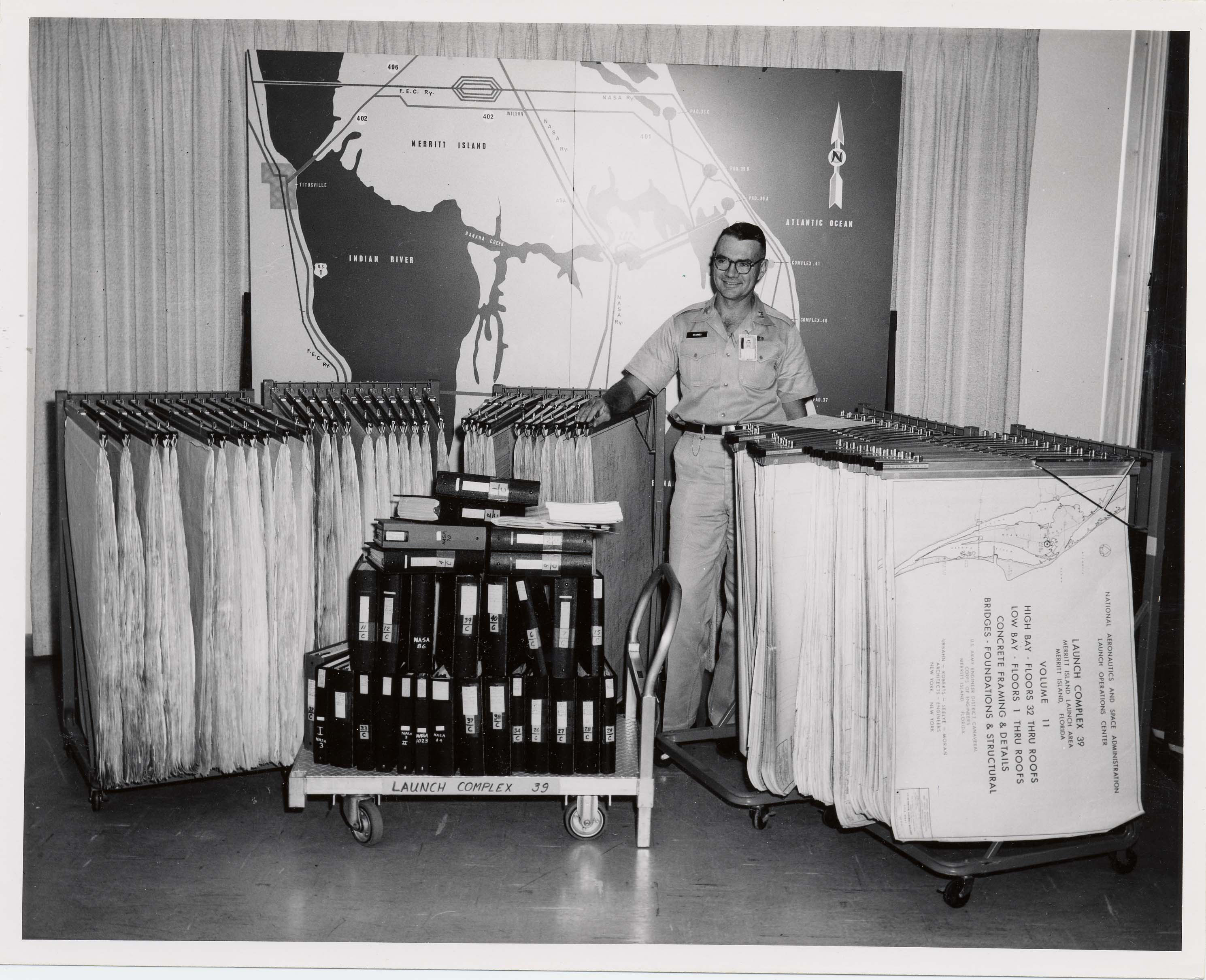 |
|
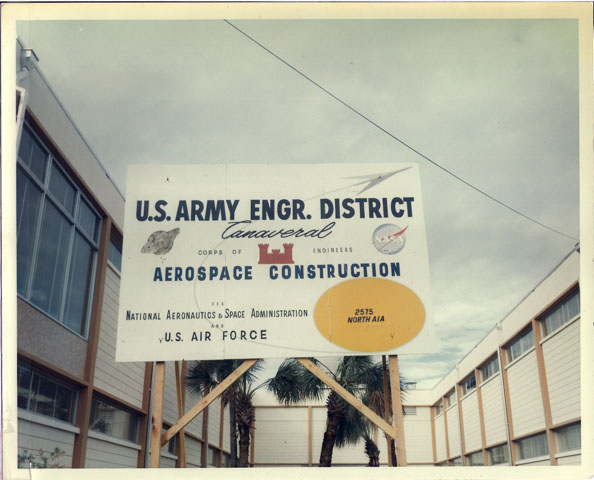 |
|
Canaveral District Engineer Col. W. L. Starnes stands with drawings and specifications for Launch Complex 39 at the Kennedy Space Center, ca. 1962. CEHO
|
|
The newly established Canaveral District managed construction of the Kennedy Space Center, ca. 1967. CEHO
|
| |
|
|
Perhaps no other structure better symbolizes the Corps of Engineers’ contribution to the United States’ space program than Launch Complex 39 at the Kennedy Space Center. Built to assemble and launch the giant Saturn V rockets that would carry the Apollo astronauts to the moon, the complex included a barge canal to transport the massive Saturn boosters; a 525-foot-tall vehicle assembly building where the launch vehicles took shape; a nearby launch control center; and two launch pads, each covering one-quarter of a square mile. Construction began in 1963, and in 1966 the American Society of Civil Engineers named the project the outstanding civil engineering achievement of the year.
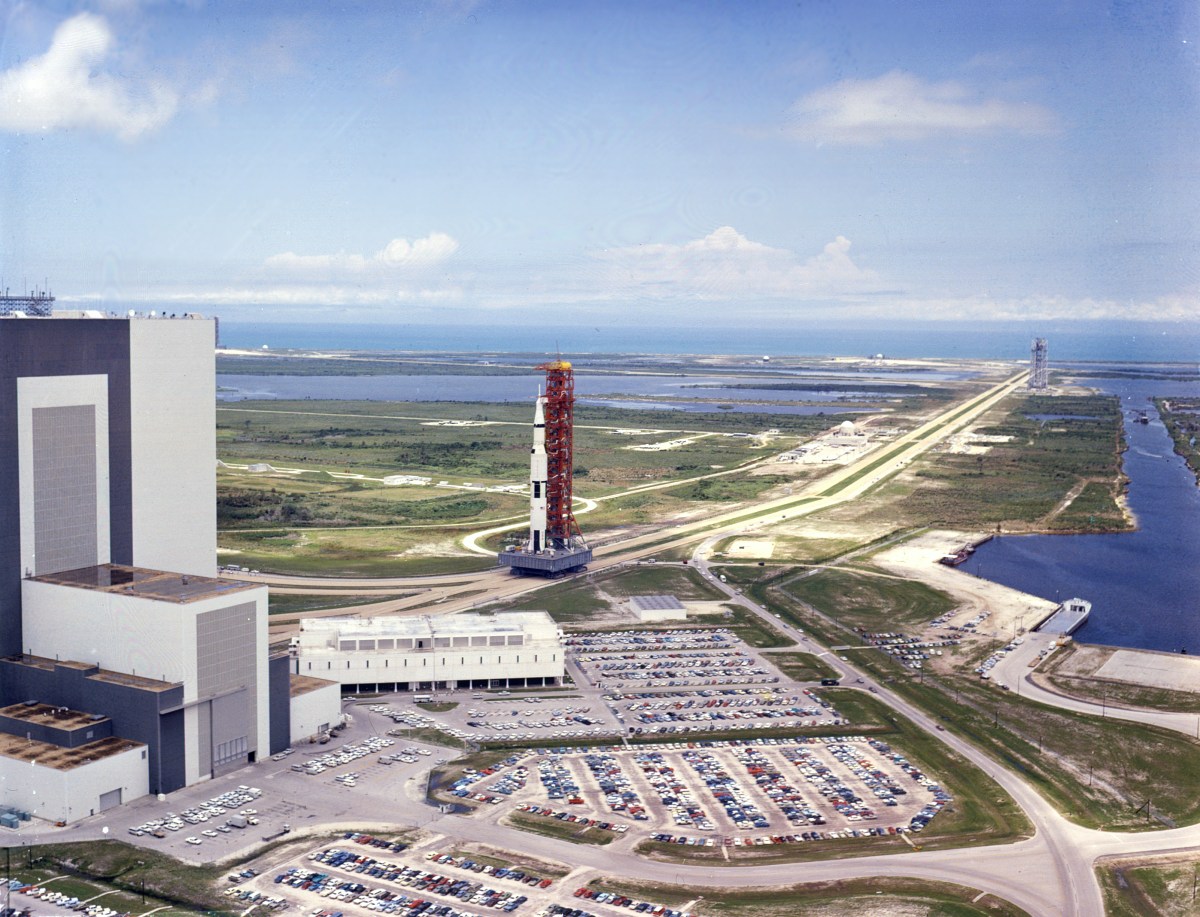 |
|
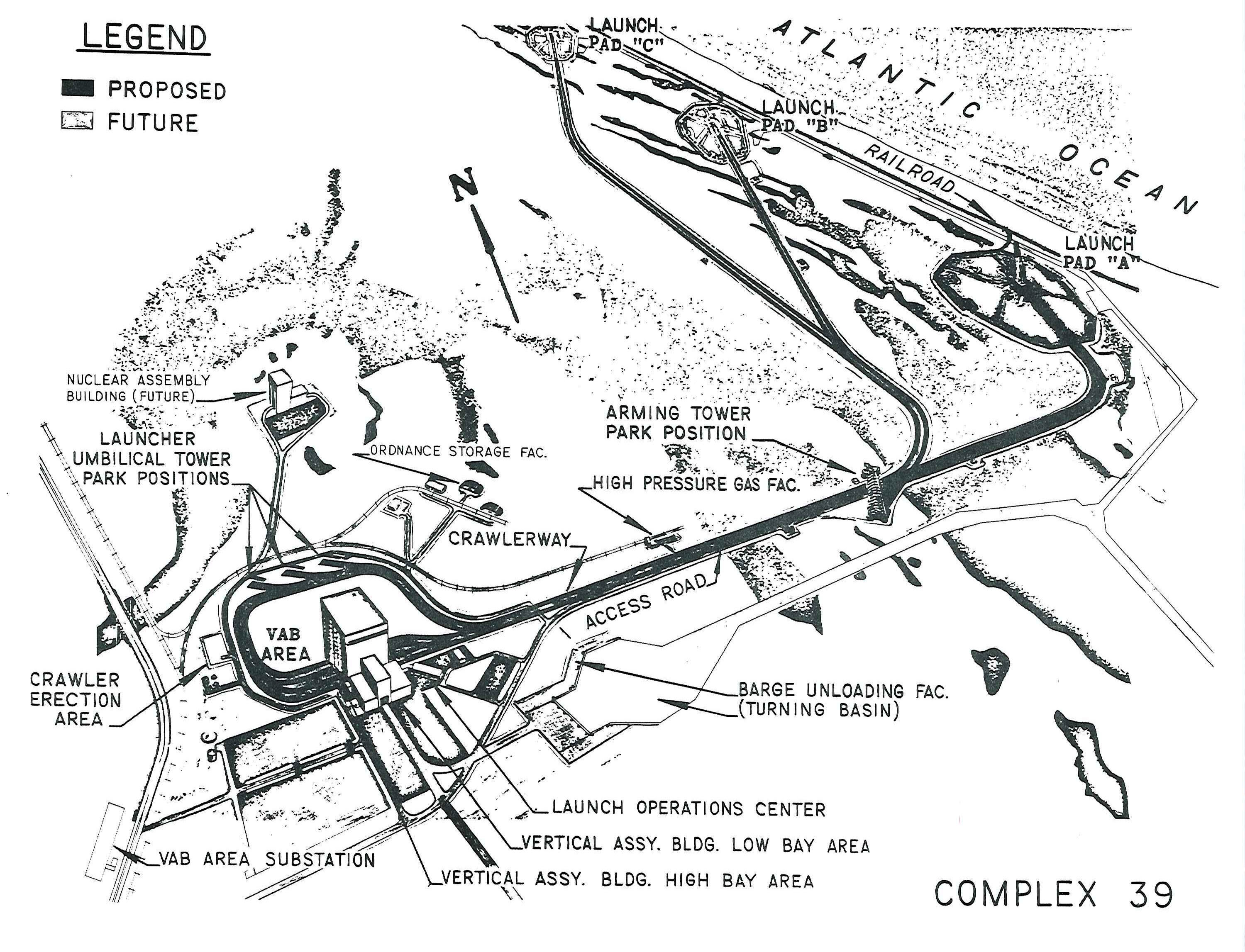 |
|
The Vehicle Assembly Building at left and the adjacent Launch Control Center. The Saturn V components arrived by barge on the canal at the extreme right. In the center, a fully assembled Saturn V launch vehicle moves along the three-mile-long crawlerway to Launch Complex 39A visible in the distance. May 20, 1969.
NASA photo ap-11-69-HC-620
|
|
This site overview drawing depicts all of the
components of Launch Complex 39.
CEHO, Maj. Gen. Tommy Hayes papers,
Box 9, “Cape Kennedy, VAB, Apollo”
- click to view larger -
|
| |
|
|
Ultimately the Kennedy Space Center cost $900 million to build, and, in the decades since its completion, it has served as America’s gateway to space. In the words of NASA administrator James Webb, “The road to the moon is paved with bricks, steel, and concrete here on earth.”
The press release below, ca. 1962, describes the design and
construction of Launch Complex 39. Click to read.
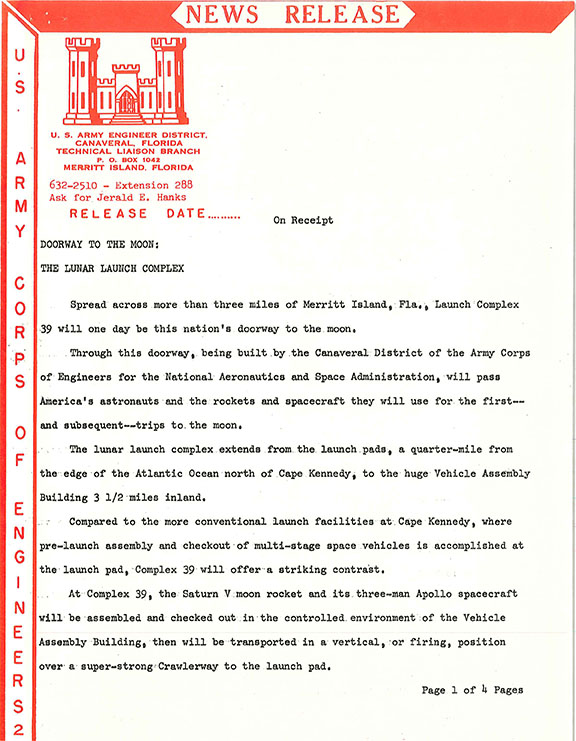
From CEHO, Maj. Gen. Tommy Hayes papers, Box 9, “Cape Kennedy, VAB, Apollo”
***
July 2019